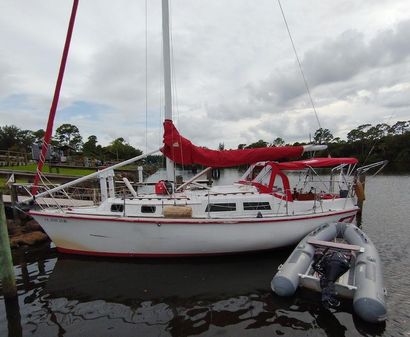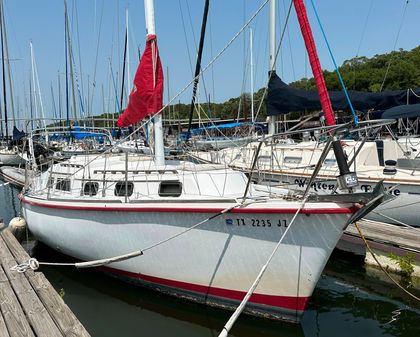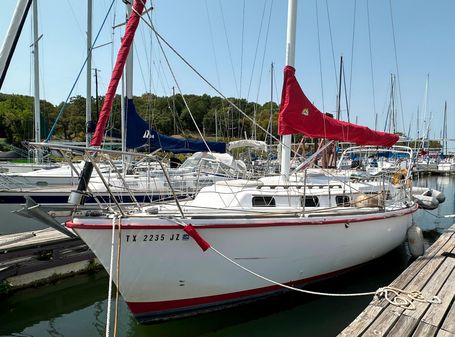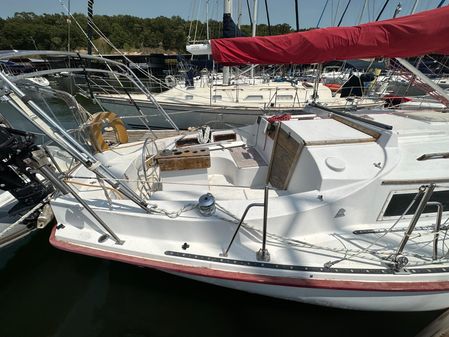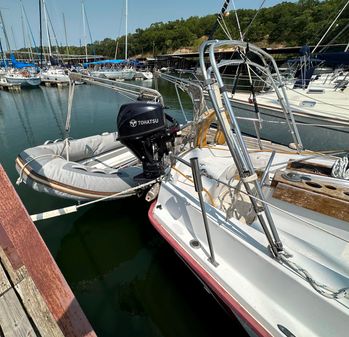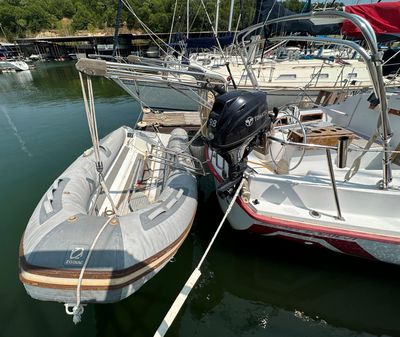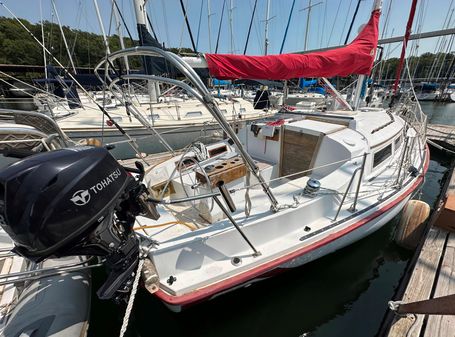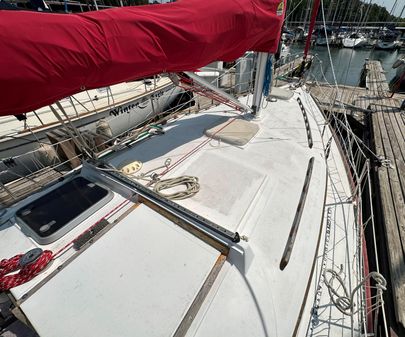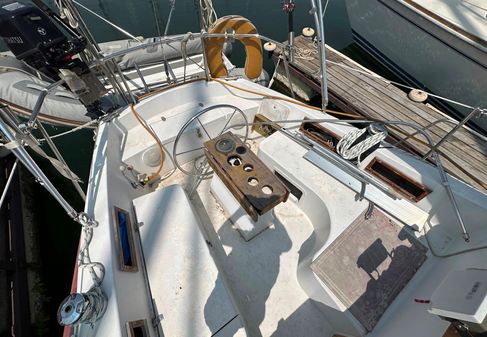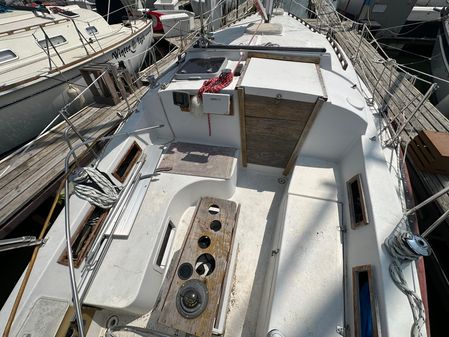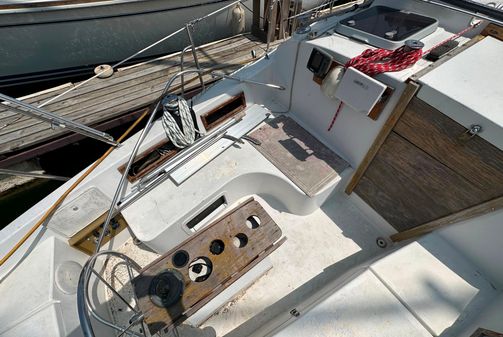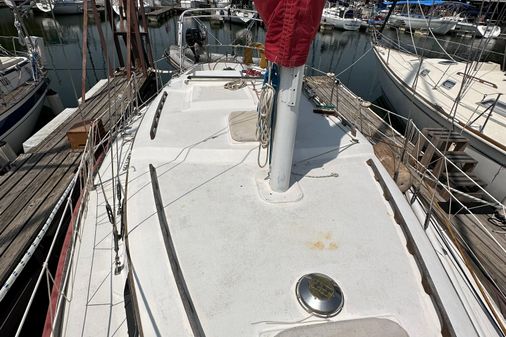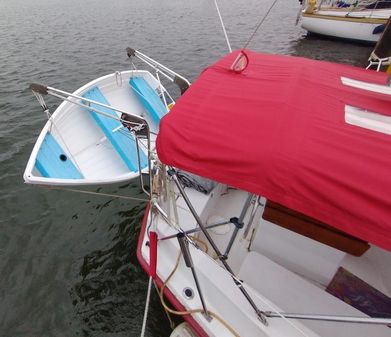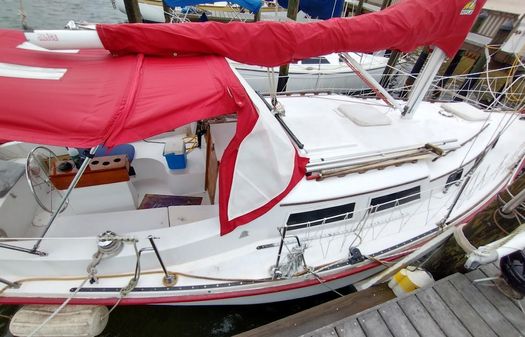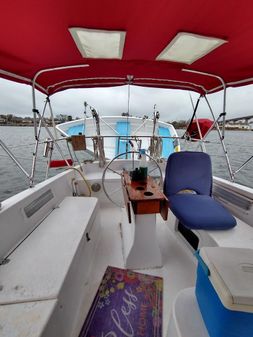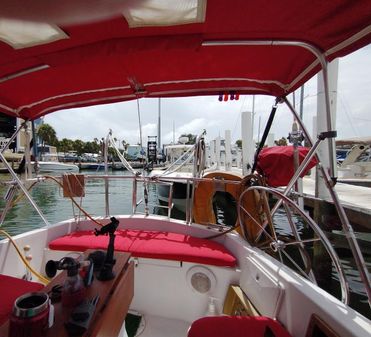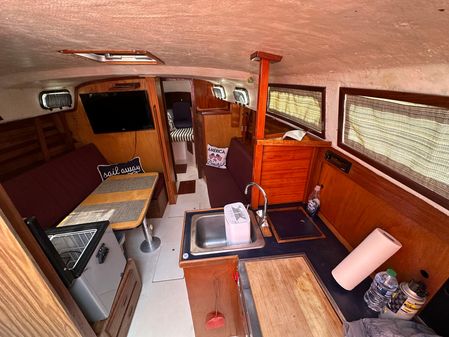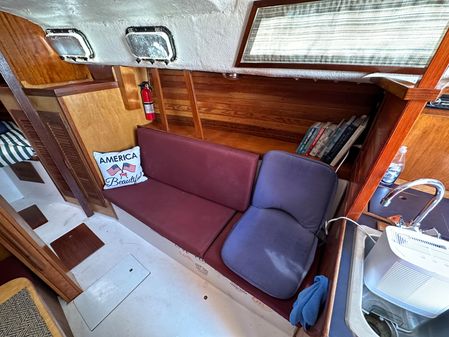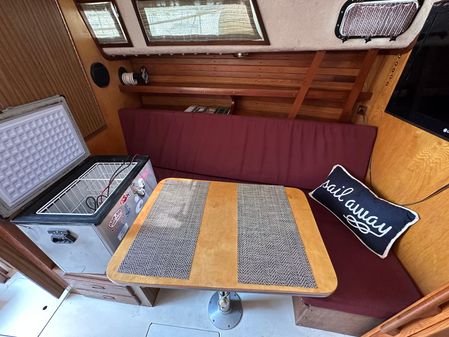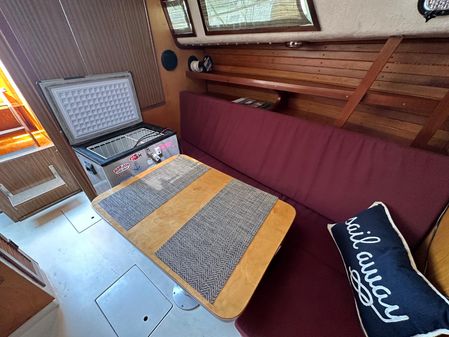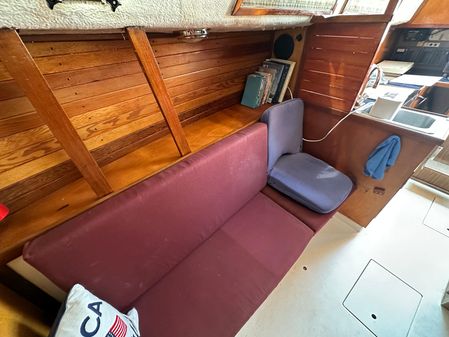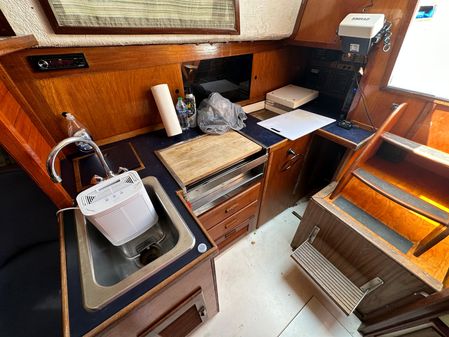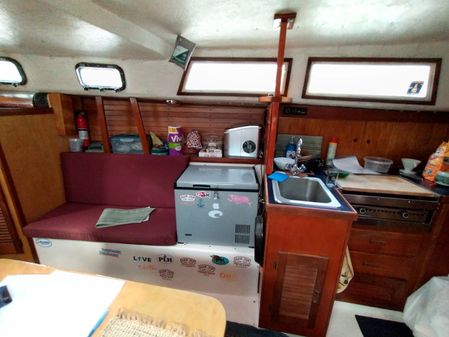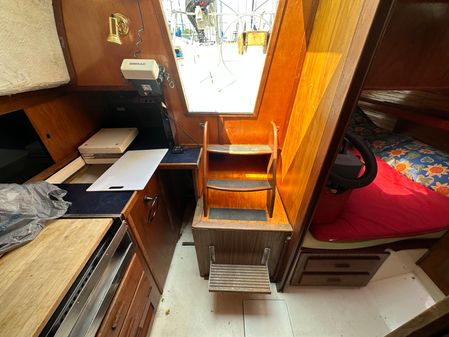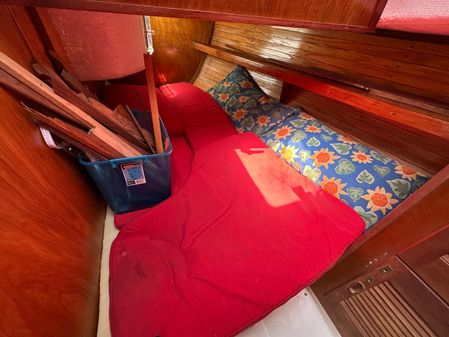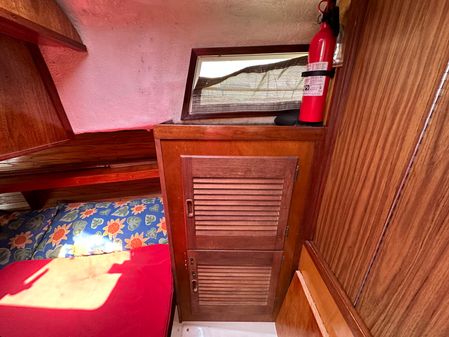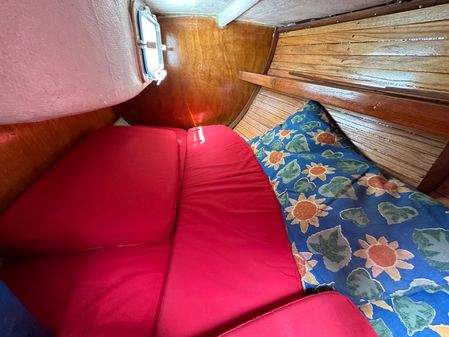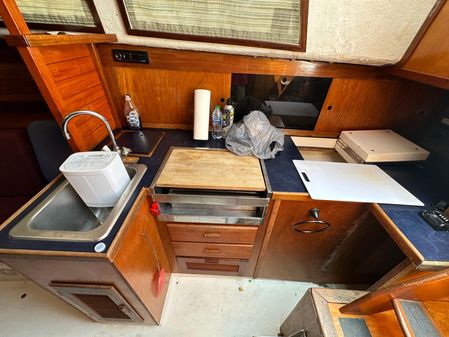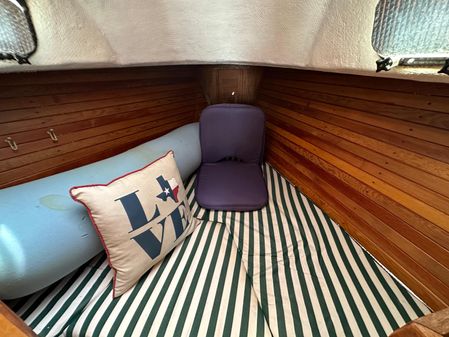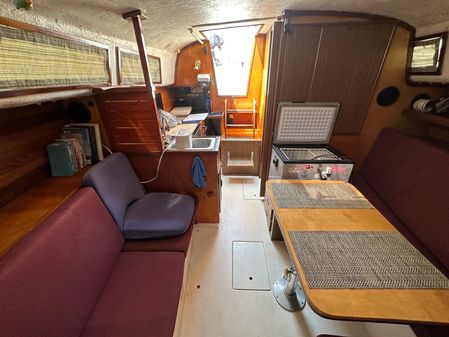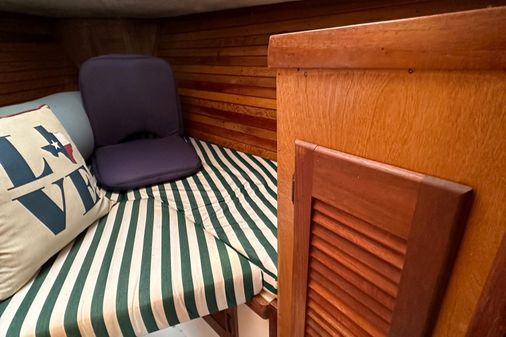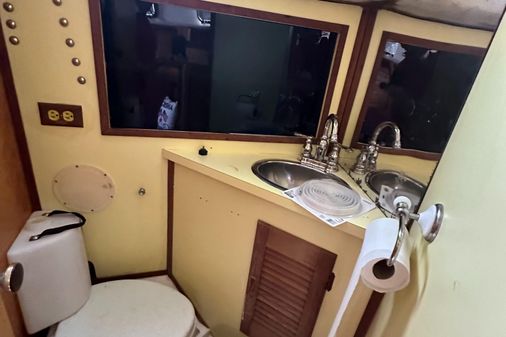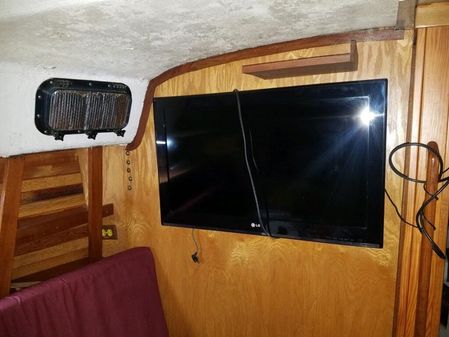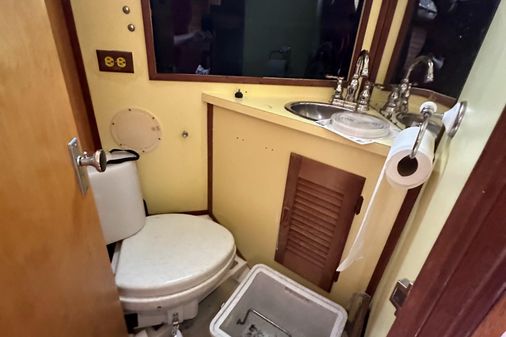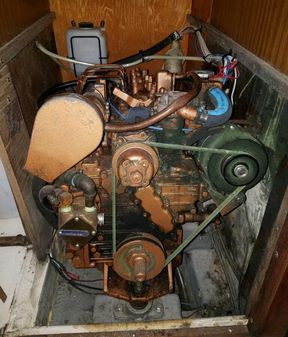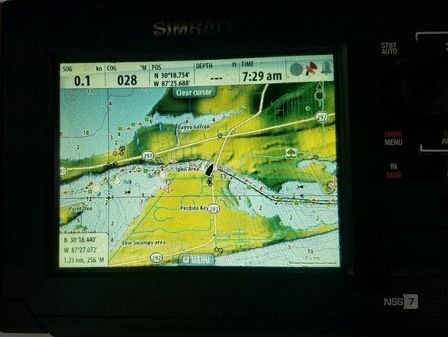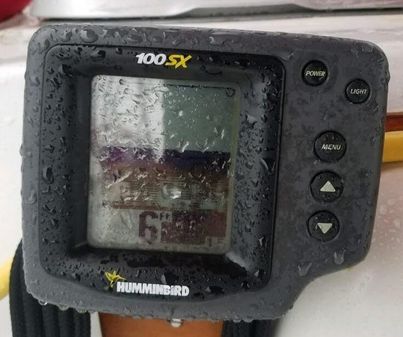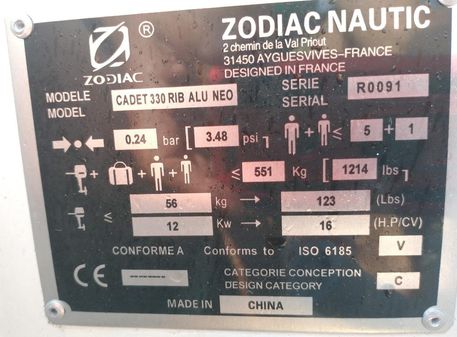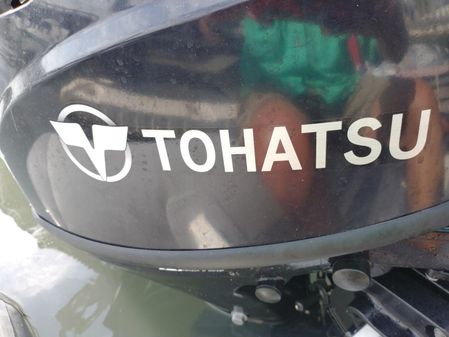Basic Boat Info
Dimensions
Engines / Speed
- Make: Universal
- Fuel: Diesel
- Engine Power: 27hp
- Type: Inboard
- Year: 1980
Tanks
Other
Contact
Office
132 Grandpappy Drive
Denison, TX, US, 75020
Tel:903-465-6330
The Company offers the details of this vessel in good faith but cannot guarantee or warrant the accuracy of this information nor warrant the condition of the vessel. A buyer should instruct his agents, or his surveyors, to investigate such details as the buyer desires validated. This vessel is offered subject to prior sale, price change, or withdrawal without notice.
- Zodiac Inflatable, No Title
- 9.8 hp Tohatsu Outboard, No Title
- Dingy Davits
- Compost Toilet
- Bimini
- Dodger
- CDI Furling
- New Prop, 3-Blade
- New Prop Shaft
- New Cutlass Bearing
- New CDI Furling Unit
- (3) New Batteries
- New Rudder
- New Rudder Bushings
- New Mast Lights
Allmand 31: Florida Born and Bound
In the Allmand 31, shoal-water cruising meets high-level comfort.
- By Gregg Nestor January 26, 2011
Allmand Boats of Hialeah, Florida, was originally a powerboat manufacturer, but during the energy crunch of the 1970s, it turned its attention entirely to sailboats. Walter Scott and T. R. Allmand collaborated on the designs, and in 1979 the company introduced three sailboat models. The Allmand 31 was, and continues to be, the most popular design. It remained in production until 1985, when the industry-wide recession of the 1980s forced Allmand to close its doors for good.
Overall, the design of the Allmand 31 is quite conservative yet contemporary. From the steep, slightly concave bow to the near-vertical stern, the sheer is almost flat. The long, low cabin trunk has a slight step-up aft. Beneath the waterline, the boat has a long, shallow keel, and the rudder is mounted on a partial skeg.
While the hull is solid fiberglass, the deck is cored with end-grain balsa. The deck mates to the hull on an outward-facing flange. This joint is bonded with resin, fastened with self-tapping screws, glassed over on the inside, and covered with a vinyl rubrail. Ballast is internal and is either cast iron (as part of the standard rig) or lead (for the tall rig).
Most of the Allmand 31s were built with a tri-cabin layout. One cabin, with the V-berth, is forward. The head compartment and a pair of hanging lockers are aft of that. The second cabin is the main saloon, in which a U-shaped dinette faces a straight settee berth and a U-shaped galley to starboard. The third cabin is aft to port. It contains a double berth, a hanging locker, and a fold-down chart table.Under sail, the boat accelerates quickly, but windward performance is hampered by its wide beam and shoal draft. Although the 31 will tack through about 90 degrees and is extraordinarily stiff and sails almost level, it makes noticeable leeway. Its best points of sail are off the wind.
The most common auxiliary is the 16-horsepower M20 Universal diesel. The 21-horsepower M25 was available as an option, and either one is adequate in most conditions.
As well as checking for age-related problems typical of older boats, a prospective buyer should examine the keel cavity for signs of a hard grounding, especially on boats with cast-iron ballast. If a break in the outer skin has let in water, the cast iron can suffer significant and costly corrosion.The strongest features of the Allmand 31 are its generous interior and its spacious cockpit. Its moderate rig is easily managed, but the shoal draft and the smallish sail area make the Allmand 31 a better candidate for coastal cruising than bluewater sailing. The boat is solidly constructed and doesn’t look that dated, but the builder wasn’t known for sailboats, and this probably accounts for the 31’s current depressed price: $14,000 to $30,000 will get you a very roomy 31-footer.
Gregg Nestor, the author of three books about sailboats, has maintained a lifelong interest in all things aquatic.
Allmand 31 From Wikipedia, the free encyclopedia Allmand 31 Development Designer Walter Scott Location United States Year 1978 Builder(s) Allmand Boats Name Allmand 31 Boat Displacement 11,100 lb (5,035 kg) Draft 3.83 ft (1.17 m) Hull Type Monohull Construction Fiberglass LOA 30.75 ft (9.37 m) LWL 27.92 ft (8.51 m) Beam 11.33 ft (3.45 m) Engine type Universal M16 or M35 20 hp (15 kW) diesel engine Hull appendages Keel/board type fin keel Ballast 4,300 lb (1,950 kg) Rudder(s) skeg-mounted rudder Rig Rig type Bermuda rig I foretriangle height 41.00 ft (12.50 m) J foretriangle base 12.00 ft (3.66 m) P mainsail luff 34.40 ft (10.49 m) E mainsail foot 12.50 ft (3.81 m) Sails Sailplan Masthead sloop Mainsail area 215.00 sq ft (19.974 m2) Jib/genoa area 246.00 sq ft (22.854 m2) Total sail area 461.00 sq ft (42.828 m2) Racing D-PN 85.5 [edit on Wikidata]
The Allmand 31 is an American sailboat that was designed by Walter Scott as a cruiser and first built in 1978.[1][2][3]
The Allmand 31 design was originally marketed as the Sail 31 and was later sold as the Allmand 312, with the same deck and hull, but a different interior layout.[1]
Production [edit]The design was built by Allmand Boats in Hialeah, Florida, United States from 1978 to 1985, but it is now out of production.[1][3][4]
Design [edit]The Allmand 31 is a recreational keelboat, built predominantly of fiberglass, with wood trim. The deck has an end-grain balsa core. It has a masthead sloop rig with aluminum spars, a raked stem, a near-vertical transom, a skeg-mounted rudder controlled by a wheel and a short fixed fin keel. It displaces 11,100 lb (5,035 kg) and carries 4,300 lb (1,950 kg) of iron ballast with the standard rig or lead with the tall rig.[1][3][5]
The boat has a draft of 3.83 ft (1.17 m) with the standard keel fitted.[1]
A tall rig was optional, with a mast about 2.0 ft (0.61 m) higher than standard for use in locations with light winds.[1]
The boat is fitted with a Universal M16 or M35 diesel engine of 20 hp (15 kW). Some sources state the standard engine was a Universal 16 hp (12 kW) M-20 diesel, with a Universal 21 hp (16 kW) M-25 optional. The fuel tank holds 28 U.S. gallons (110 L; 23 imp gal) and the fresh water tank has a capacity of 40 U.S. gallons (150 L; 33 imp gal).[1][3][5]
The design has a galley on the starboard side, including an 8 95 cu ft (2.7 m3) icebox and pressure water. The head is located forward on the port side, just aft of the bow "V"-berth. Additional sleeping accommodation includes an aft cabin under the cockpit, a port side main cabin settee that converts to a double and a starboard side settee/berth for total sleeping space for seven people. The dinette also seats seven people.[3]
Ventilation is provided by hatches over the aft cabin, main cabin and bow cabin, plus seven opening ports.[3]
Two winches are provided in the cockpit for the genoa sheets and a winch on the mast for the mainsail halyard, plus another winch for the genoa halyard.[3]
The design has a Portsmouth Yardstick racing average handicap of 85.5.[3]
Operational history [edit]In a review Richard Sherwood wrote, "the Allmand is claimed to have a tacking angle of 84 degrees. Because beam on deck is 11 feet 4 inches and 8 feet 6 inches at the water, after initially heeling she picks up a large amount of buoyancy and is stiff. The long water line allows for additional internal volume."[3]
Gregg Nestor wrote a review of the design in Cruising World in 2013, noting its sailing qualities, "under sail, the boat accelerates quickly, but windward performance is hampered by its wide beam and shoal draft. Although the 31 will tack through about 90 degrees and is extraordinarily stiff and sails almost level, it makes noticeable leeway. Its best points of sail are off the wind." He concluded, "the strongest features of the Allmand 31 are its generous interior and its spacious cockpit. Its moderate rig is easily managed, but the shoal draft and the smallish sail area make the Allmand 31 a better candidate for coastal cruising than bluewater sailing. The boat is solidly constructed and doesn’t look that dated, but the builder wasn’t known for sailboats, and this probably accounts for the 31’s current depressed price"[5]
A review in Practical Sailor, stated, "this 1970's era cruiser is beloved for its roomy, tri-cabin interior, but it does not sail close to the wind and the shoal keel makes excessive leeway.".[6]
The Company offers the details of this vessel in good faith but cannot guarantee or warrant the accuracy of this information nor warrant the condition of the vessel. A buyer should instruct his agents, or his surveyors, to investigate such details as the buyer desires validated. This vessel is offered subject to prior sale, price change, or withdrawal without notice.
Please call Rick Lemon, CPYB
903-814-3753
